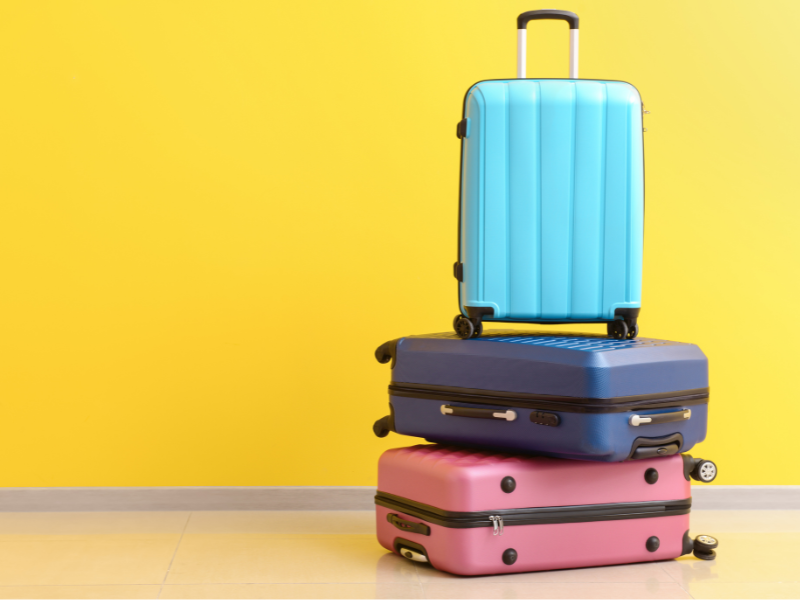Traveling and being on the go can be exhilarating, but for individuals who have difficulty with sensory regulation, it can also pose challenges. Maintaining sensory balance is crucial for individuals with sensory processing needs, and having the right tools at hand can make a significant difference. In this blog post, we'll explore a range of compact and travel-friendly sensory products that help individuals stay regulated and have a more positive travel experience.

1. Fidget Toys: Fidget toys are a fantastic way to provide sensory input discreetly. From small textured stress balls to pocket-sized fidget cubes, these tools offer tactile stimulation that can help ease anxiety and restlessness during travel. They're perfect for both children and adults and can easily fit into pockets or bags.
2. Noise-Canceling Headphones: Noise-canceling headphones are a blessing for those who are sensitive to auditory stimuli. They can block out unwanted sounds in busy airports, crowded buses, or noisy public spaces, creating a calmer environment. Compact and foldable models are available, making them ideal companions for any journey.
3. Weighted Lap Pads and Blankets: For individuals who benefit from deep pressure stimulation, portable weighted lap pads or travel-sized weighted blankets are invaluable. These items can be used during flights, car rides, or while waiting at terminals, providing a comforting sense of pressure and security.
4. Aromatherapy Inhalers: Aromatherapy can be incredibly soothing for sensory seekers. Portable inhalers containing calming scents like lavender, mint, or eucalyptus can be used discreetly to provide olfactory stimulation and relaxation, helping to reduce anxiety during travel.
5. Chewable Jewelry: Chewing or biting can be a self-regulating behavior for many individuals. Chewable necklaces, tethers or bracelets designed for sensory needs offer a safe and inconspicuous way to satisfy this sensory craving while on the move.
6. Visual Calming Tools: Visual sensory products are equally important. Compact liquid gel timer fidgets, squish & squeeze goo mats, or even a smartphone app with soothing visuals can help individuals find visual equilibrium in unfamiliar surroundings.
7. Textured Comfort Items: Travel-sized textured cushions or pads made from materials like fleece, faux fur, or velour can offer a comforting touch and sensory input. These items can be placed on seats, providing a known and soothing texture in different environments.
8. Handheld Massagers: Handheld massagers, especially those with different textures, can offer both tactile and proprioceptive input. They can be used to provide gentle pressure and stimulation to various body parts, promoting relaxation and sensory regulation.
9. Mindfulness Journals: Mindfulness and journaling can help individuals stay grounded. Compact journals with sensory-friendly features like soft-touch covers or textured pages can be used to jot down thoughts, emotions, or engage in mindfulness exercises during travel.
10. Sensory Apps and Games: In today's digital age, there are various sensory-focused apps and games available for smartphones and tablets. These apps can provide interactive sensory experiences, keeping individuals engaged and regulated during long journeys. For specific app ideas check out our article Free Phone Apps For Managing Stress And Anxiety.
While travel and being on the go might present sensory challenges, having the right tools can make all the difference. The compact and travel-friendly sensory products mentioned above offer a range of options for individuals seeking assistance with sensory regulation during their adventures. By incorporating these tools into their travel routines, individuals can enjoy smoother journeys and embrace new experiences with greater comfort and confidence.
©2023 Therapy Shoppe® Incorporated. All rights reserved.
More articles you might enjoy:
Holiday Survival Tips for Kids Who Have Sensory Differences
8 Tips and Tools for Taking Your SPD-Challenged Child Places
Using Therapy Balls to Promote Core Strength and Sensory Regulation
Making Hair Cutting Appointments a Success for Children with Special Needs
Understanding Why Children Chew: Exploring the Importance and Benefits

